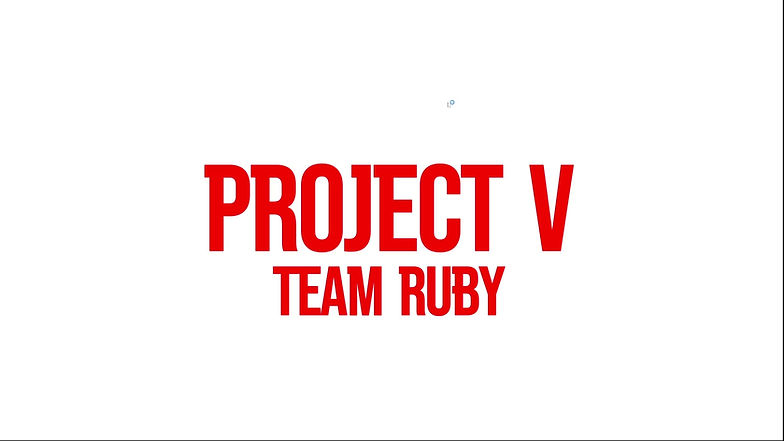William Carson
Game Designer | Level Designer
Project V (FPS)
Student Project
Platform | PC
Playtime | 10 Minutes
Roles | Game Designer Level Designer
Team | 6 Members
Engine | Unreal Engine 5
Duration | 4 Months
Time Spent | 165 Hours
Download: https://teamrubyfs.itch.io/project-v
Key Contributions:
-
Collaborated across a 6-person team using Perforce for version control and Agile workflow for iteration.
-
Shaped moment-to-moment gameplay by designing and implementing core traversal mechanics (slide, wall-run, grapple).
-
Built two major level sections (Entry Level, Generator Room, and Final Boss Arena) that taught and tested movement mastery.
-
Led 10+ internal playtests; adjusted pacing, combat friction points, and player flow based on feedback.
Game Mechanics - Advanced Movement Systems:
Slide Mechanic
-
Built using Blueprint Timeline nodes to control momentum and curve deceleration.
-
Integrated slope detection using line and capsule traces, ensuring consistent downward motion on inclines.
-
Allowed cancellation into jump or dash for creative combat options and flow.
-
Tuned values for slide length, cooldown, and input buffering through multiple playtest passes.
Wall-Running
-
Used collision detection and vector math to allow sustained movement along designated surfaces.
-
Added vertical wall-run logic for mixed traversal sequences (e.g., wall run into ledge vault or grapple).
-
Included fail-safe recovery logic to prevent frustrating falls and allow movement chaining.
Grapple:
-
Implemented a simple grappling system to pull the player toward designated anchor points using Blueprint vector interpolation.
-
Designed for upward traversal to access higher platforms, vertical transitions, and escape routes.
-
Used line traces to validate target location and trigger grapple movement while avoiding collision issues.
-
Balanced as a limited-use tool to complement wall-running and sliding, emphasizing thoughtful movement over spam.
My Section Before
My Section After
Level Design:
-
Level 1 – Entry Corridor: Designed the introductory section of the game, focusing on teaching players core movement mechanics while immersing them in the game’s story and environment.
-
Balanced combat encounters create a natural learning curve for mechanics like wall running, dashing, and sliding.
-
Designed engaging traversal sequences involving hazardous environments, such as navigating toxic alien waste spill areas using advanced movement mechanics.
-
Balanced enemy placement and level pacing to maintain player engagement and challenge across exploration, combat, and puzzle-solving encounters.
-
Level 2 – Generator Room: Redesigned this key room to improve player flow, readability, and strategic use of movement mechanics.
-
Enhanced verticality and added traversal opportunities, such as wall-running paths and grappling points, to encourage players to explore multiple approaches during combat.
-
Boss Arena Redesign: Reimagined the final arena to optimize movement mechanics like wall running and sliding.
-
Introduced modular walls, platforms, and cover points that supported high-speed combat and rewarded creative use of traversal skills.




Environmental Storytelling:
-
Replaced placeholder assets with final props to reinforce the narrative tone and visual cohesion in each room.
-
Crafted environments that reinforced the game’s narrative, such as damaged corridors, alien containment breaches, and abandoned labs, ensuring visual cohesion with the game’s arctic laboratory theme.
-
Embedded lore through damaged corridors, research logs, and abandoned labs revealing secrets of Project V and Entity X.




Additional Contributions:
-
Conducted playtests and fine-tuned mechanics to ensure responsive feel, adjusting movement speed, collision, and timing.
-
Redesigned the in-game menus and sound settings UI for aesthetic cohesion and functional clarity.
-
Refined the sound menu, ensuring settings were saved properly, and adjusting sound effects to achieve a balanced and immersive audio experience for players.
-
Worked cross-functionally with designers to stitch individual levels into a cohesive campaign, maintaining narrative and mechanical consistency across the experience.
Wrap Up
Project V was a capstone FPS project that pushed my ability to design fast, expressive movement that serves combat and exploration. I developed and tuned systems in Unreal Engine 5 using Blueprints, implemented them in playable levels, and iterated with real feedback across a 6-person team using Perforce and Agile workflows.

Project V is a sci-fi FPS where players control a protagonist equipped with an experimental spinal implant, granting enhanced physical abilities like wall running and sliding. Set in a high-security artic laboratory under attack, players must use these movement mechanics to fight off enemies and uncover the facility's dark secrets, all while managing the protagonist’s psychological stability through an AI module.